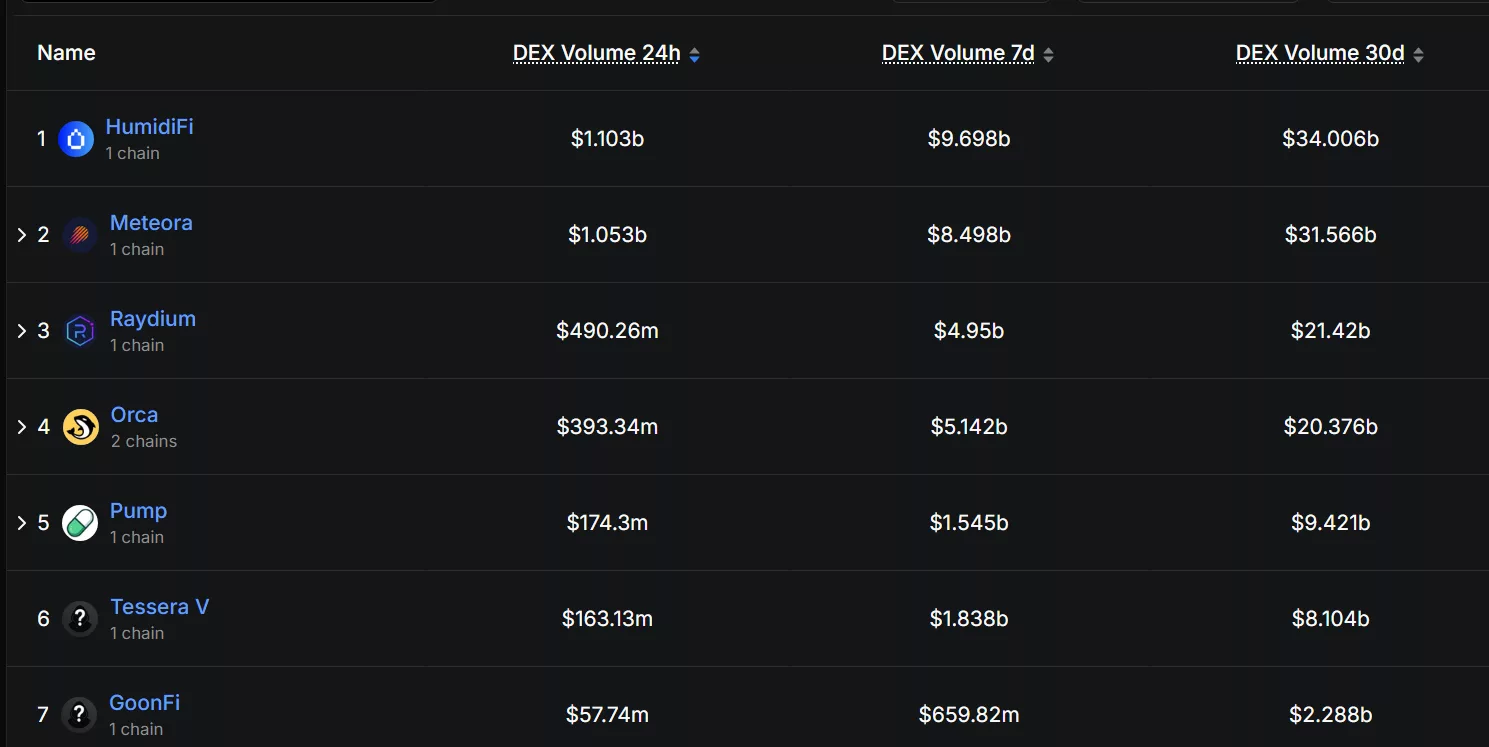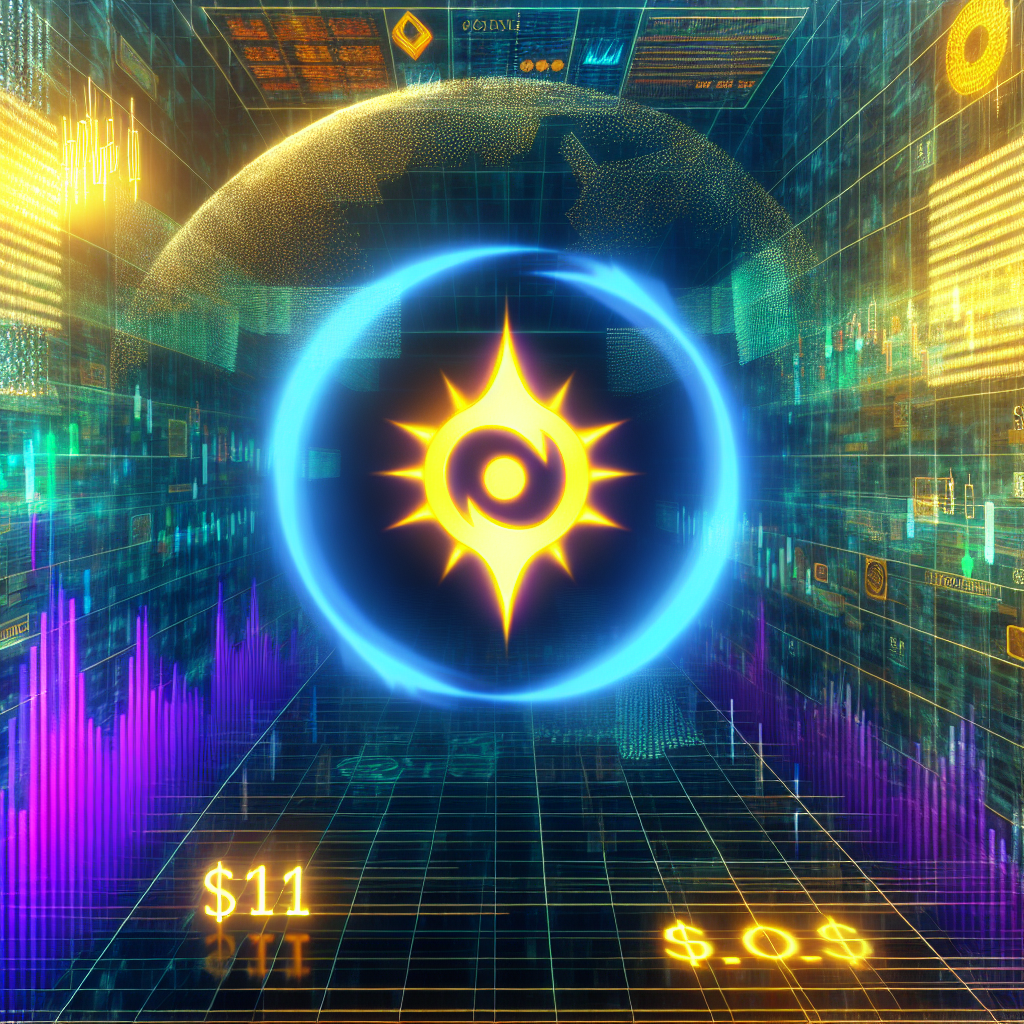The dark pool exchange HumidiFi has emerged as the leading DEX protocol on the Solana blockchain, eclipsing competitors like Meteora, Raydium, and Pump in all aspects.
Summary
- HumidiFi has surpassed prominent competitors such as Meteora, Raydium, and Pump.fun, establishing itself as Solana’s largest DEX, with over $1.1 billion in 24-hour trading volume.
- This growth signifies a broader trend in DeFi shifting towards dark pool or proprietary AMM models that emphasize execution efficiency and privacy instead of transparency and open liquidity.
On October 20, the dark pool decentralized exchange HumidiFi officially claimed the title of the largest protocol on the Solana blockchain, surpassing Meteora, Raydium, and Pump.fun. Data from DeFi Llama shows that the protocol contributes approximately $1.1 billion to the total 24-hour DEX trading volume on Solana.
At the time of writing, the total daily DEX volume on Solana (SOL) has exceeded $3.68 billion. In comparison to Meteora, the second-largest DEX on Solana, the dark pool protocol enjoys a lead of $100 million.
In terms of DEX trading volume over the past week, it is also in the forefront with a trading volume that has approached $10 billion. In contrast, Meteora’s seven-day trading volume trails by about $1.2 billion.
Meanwhile, Raydium’s (RAY) daily DEX volume is approaching $500 million, while its seven-day trading volume remains below $5 billion, indicating that it still lags behind the two largest DEX platforms on Solana.

In contrast, Solana’s meme coin launchpad Pump.fun (PUMP) has seen a significant decline. The protocol’s DEX trading volume is currently at $174.3 million. However, Pump.fun has recorded a total DEX trading volume of $1.5 billion, with a 30-day volume reaching $9.4 billion.
HumidiFi is a decentralized exchange platform built on the Solana blockchain utilizing a “proprietary” automated market maker or prop AMM, rather than the standard open-liquidity-pool AMM model. This signifies that the protocol does not depend on external liquidity providers contributing to open pools as many conventional AMMs do, which is why it’s termed a “dark pool.”
Dark pools keep trades entirely hidden from other users, unlike traditional exchanges. With platforms like HumidiFi, traders can execute private trades, which are particularly advantageous for conducting high-value transactions and large liquidations.
What does HumidiFi’s surge indicate?
The recent surge in trading activity on HumidiFi may indicate significant changes in the decentralized finance landscape. It reflects a transformation in how liquidity is supplied and utilized in DeFi.
Traditional DEX models, characterized by open AMMs and visible liquidity pools, are being challenged by newer models where liquidity is centrally administered and trades are routed via aggregators such as Jupiter to high-efficiency venues. This may suggest a market shift from public pools to dark pools.
Traders could be prioritizing execution efficiency and institutional-grade trading mechanics over traditional metrics like visible total value locked or open-pool liquidity. HumidiFi claims to have managed $8.55 billion in weekly trading volume while maintaining a low TVL by focusing on narrow spreads, low slippage, and reduced risk of front-running or sandwich attacks.
Conversely, the rise in HumidiFi’s trading volume may indicate that an increasing number of traders prefer to keep their trades anonymous rather than public. The transition towards closed liquidity models might raise concerns regarding transparency, decentralization, and fairness on-chain.
Moreover, there are questions about the long-term sustainability of this model. It is possible that the recent increase in activity is solely a temporary response to specific market conditions or pairs currently being traded on the platform.

